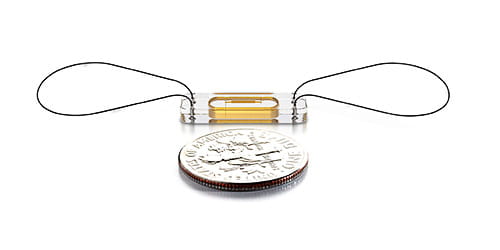Heart Failure: How an Implantable Sensor Can Help
February 19, 2020

After a massive heart attack 32 years ago, Marilyn Buckholz was admitted to the hospital for heart failure several times a year. It impacted her productivity and quality of life.
“All of the sudden, it’s like I can’t breathe at all and I have to call the ambulance,” she says.
When in heart failure, the heart can’t adequately pump fluid around the body. As a result, fluid can accumulate in different areas, including the lungs and tissues. Symptoms include shortness of breath, coughing, exhaustion and swelling of the abdomen, legs, feet and ankles. These symptoms can present gradually, but many times they may affect patients unexpectedly. Complications from the disease send many of them back to the hospital again and again.
Research also shows that heart failure patients with more hospitalizations die sooner than those with fewer trips to the hospital. But a piece of technology smaller than an AA battery has proven to keep these patients from re-admittance, and University Hospitals is lending its expertise as a national training site for the program.
Five years ago, Ms. Buckholz enrolled in the CardioMEMS program at UH. Abbott’s CardioMEMS is a miniature, wireless sensor, implanted into the patient’s pulmonary artery. It monitors pulmonary artery pressures. Data from the sensor is transmitted directly to the University Hospitals Harrington Heart & Vascular Institute heart failure team at UH Cleveland Medical Center. The information allows the team to make adjustments to diuretic and other medications at the earliest signs of PA pressure abnormalities. Making medication and diet changes before a patient begins to feel bad keeps them from returning to the hospital.

Currently the heart failure team at UH Cleveland Medical Center manages more than 100 heart failure patients – with impressive results. UH has seen a 70 percent reduction in heart failure readmissions for patients with CardioMEMS.
“I have not been in the hospital once since I got the CardioMEMS,” Ms. Buckholz says.
To record her results and transmit them to her heart failure team, Ms. Buckholz lies on a special pillow for a short time each day. The pillow gathers the information from the sensor in her pulmonary artery and sends it to Heather Blume, CNP.
“Whenever I see Heather Blume come up on my phone I’m like, ‘Uh oh!’” Ms. Buckholz says.
“If Marilyn ate a salty dinner the night before, I’ll know without her telling me. Her sensor will tell me,” Ms. Blume says. “Then, we can make any needed adjustments before things get out of control.”
The heart failure specialists at UH Cleveland Medical Center were early adopters of CardioMEMS. Since the program’s inception in 2015, UH has served as a national training site for other caregivers.
“We have trained dozens of heart failure teams from hospitals across the country,” Ms. Blume says. “We’re proud that they’re taking the knowledge and experience gained with us to improve the lives of heart failure patients elsewhere.”
All of the caregivers involved in the program have embraced a team approach leading to successes in insurance pre-authorization, data management, patient communication and research.
Predicting which heart failure patients will be re-hospitalized is difficult and there is still much to learn. But tracking pulmonary artery pressures is a proven way to get ahead of heart failure before it progresses and keep patients living longer, more fulfilling lives.
Tags: Heart Disease


